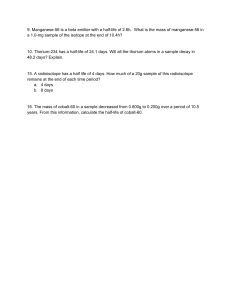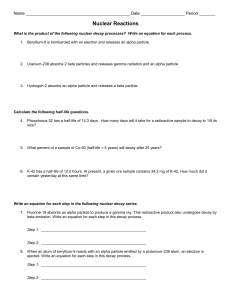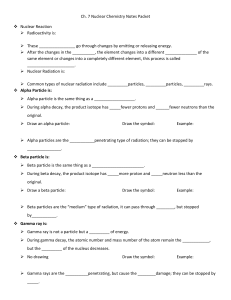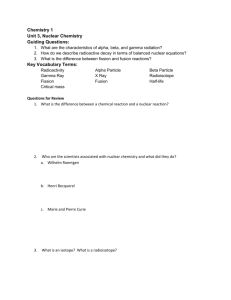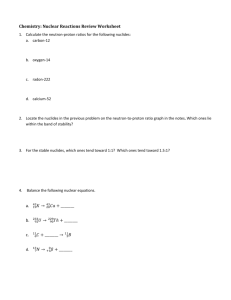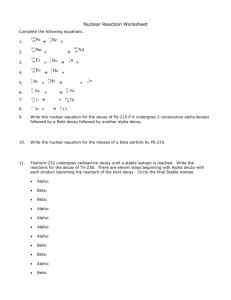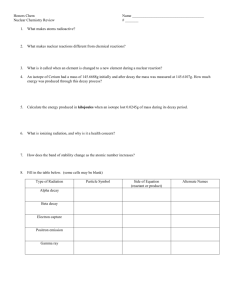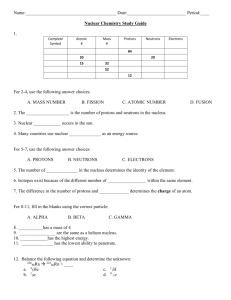Nuclear Chemistry Exam Questions
advertisement
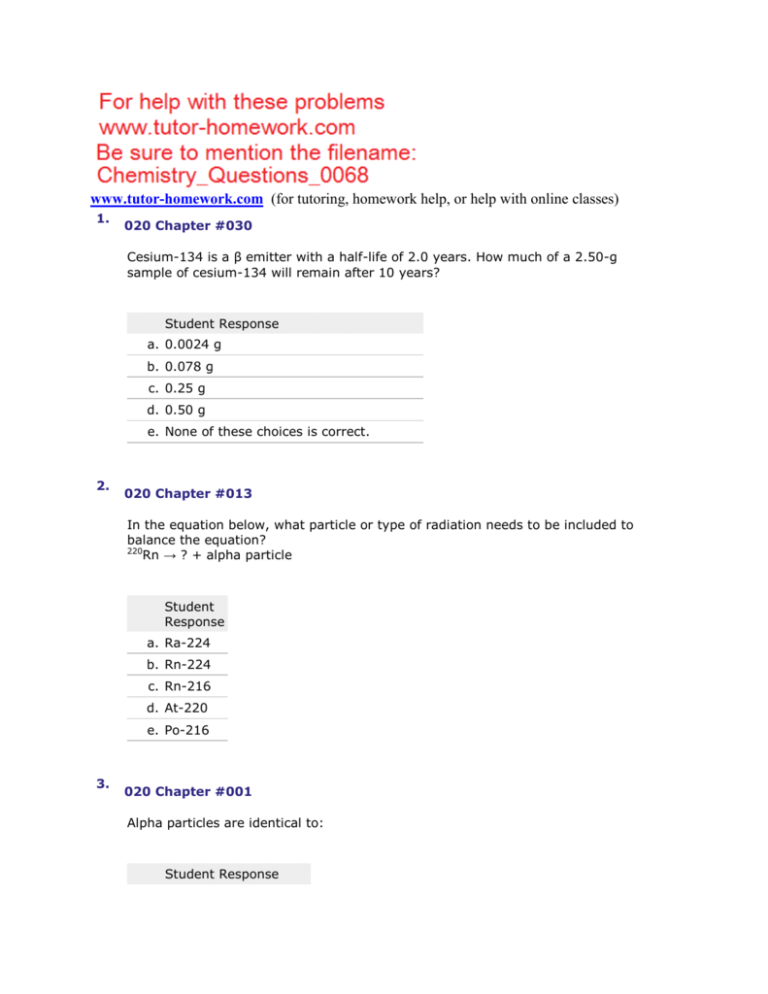
www.tutor-homework.com (for tutoring, homework help, or help with online classes) 1. 020 Chapter #030 Cesium-134 is a β emitter with a half-life of 2.0 years. How much of a 2.50-g sample of cesium-134 will remain after 10 years? Student Response a. 0.0024 g b. 0.078 g c. 0.25 g d. 0.50 g e. None of these choices is correct. 2. 020 Chapter #013 In the equation below, what particle or type of radiation needs to be included to balance the equation? 220 Rn → ? + alpha particle Student Response a. Ra-224 b. Rn-224 c. Rn-216 d. At-220 e. Po-216 3. 020 Chapter #001 Alpha particles are identical to: Student Response a. protons. b. helium atoms. c. hydrogen atoms. d. helium nuclei. e. electrons. 4. 020 Chapter #020 The energy equivalent of 1 amu is: Student Response a. 5.0 × 10-19 J b. 5.4 × 1043 J c. 6.6 × 109 J d. 1.5 × 10-10 J 5. 020 Chapter #080 No alpha decay is observed for isotopes of elements with Z < 83. Student Response a. TRUE b. FALSE 6. 020 Chapter #040 A sample of a radioisotope shows an activity of 999 disintegrations per minute due to beta decay. If after 1.10 years the activity is 952 disintegrations per minute, what is the half-life of this radioisotope? Student Response a. 4.38 × 10-2 yr b. 11.4 yr c. 0.25 yr d. 15.8 yr e. 9.1 yr 7. 020 Chapter #060 What element is the stable end-product of the uranium radioactive decay series? Student Response a. Th b. Pu c. Ra d. Au e. Pb 8. 020 Chapter #050 Identify the missing species in the following nuclear transmutation. U-238 + ? → 1 neutron + Fm-249 Student Response a. b. c. d. e. 9. 020 Chapter #070 The dose unit of ionizing radiation is called the rad. The rad is defined in terms of: Student Response a. the half-life of a radioisotope. b. the energy deposited per gram of an object. c. the biological damage produced. d. the accumulation of fission products. e. the number of ions per centimeter. 10. 020 Chapter #010 In the equation below, what particle or type of radiation needs to be included to balance the equation? 208Po → ? + 208At Student Response a. gamma b. alpha c. proton d. beta e. positron
